Tom's Guide Verdict
With its great video quality and innovative mounting system, the DJI Osmo Action 3 is a solid lower-cost alternative to the GoPro Hero11 Black.
Pros
- +
Solid video quality
- +
Innovative mounting options
- +
More affordable than a GoPro
Cons
- -
Photo quality is limited to 12 MP
- -
Upload and edit process is entirely manual
- -
Stabilization is just good enough
Why you can trust Tom's Guide
Max Video Resolution: 4K/120 fps
Max Photo Resolution: 12 MP
Touch Screen: Yes (2)
Battery Life: 160 minutes (1080p/30 fps)
Water Resistance: 16 meters
Size: 70.5 x 44.2 x 32.8 millimeters
Weight: 145 grams
DJI’s Osmo Action 3 camera has a new look and a new mounting system that GoPro should seriously consider copying. The 4K action cam is built to withstand some abuse and still capture the shot.
But with the recent release of the GoPro Hero 11 Black, complete with a new — and impressive — sensor alongside a streamlined and hands-free way of editing your footage, does the Action 3 do enough to merit a spot on our list of the best action cams? Or does the fact that it starts at $329 make up for it?
I spent a few weeks testing the Action 3 to figure that out. Read the rest of our DJI Osmo Action 3 review to find out if this is the best action camera for you.
DJI Osmo Action 3 review: Price and availability
The DJI Osmo Action 3 is available for $329 as part of a Standard Combo, which includes an Extreme Battery, a Horizontal-Vertical Protective Frame and miscellaneous mounting hardware.
The $439 Osmo Action 3 Adventure Combo includes two Extreme Batteries, a battery case for charging all of your batteries at the same time, a 1.5-meter Extension Rod and mounting hardware.
DJI also has combo kits specific to biking, skiing or diving, for $408, $378 or $408, respectively. Each specialized combo kit comes with an accessory that’s best suited for the activity. For example, the biking kit comes with a chest strap and handlebar mount, the skiing combo comes with the 1.5-meter extension rod, and the diving combo comes with a waterproof case, a floating handle and anti-fog inserts.
DJI Osmo Action 3 review: A clever but familiar design
DJI ditched the modular approach that it took with the Action 2, and went for a more traditional action cam design for the Action 3. At first glance, it’d be easy to mistake the Action 3 for a GoPro with a slightly different design. On the front, there’s a large, circular cover that goes over the lens. Next to that is the 1.4-inch front display that responds to touch and can be used to control the camera, a nice addition over a GoPro’s front screen that’s used to help frame a shot.
Get instant access to breaking news, the hottest reviews, great deals and helpful tips.
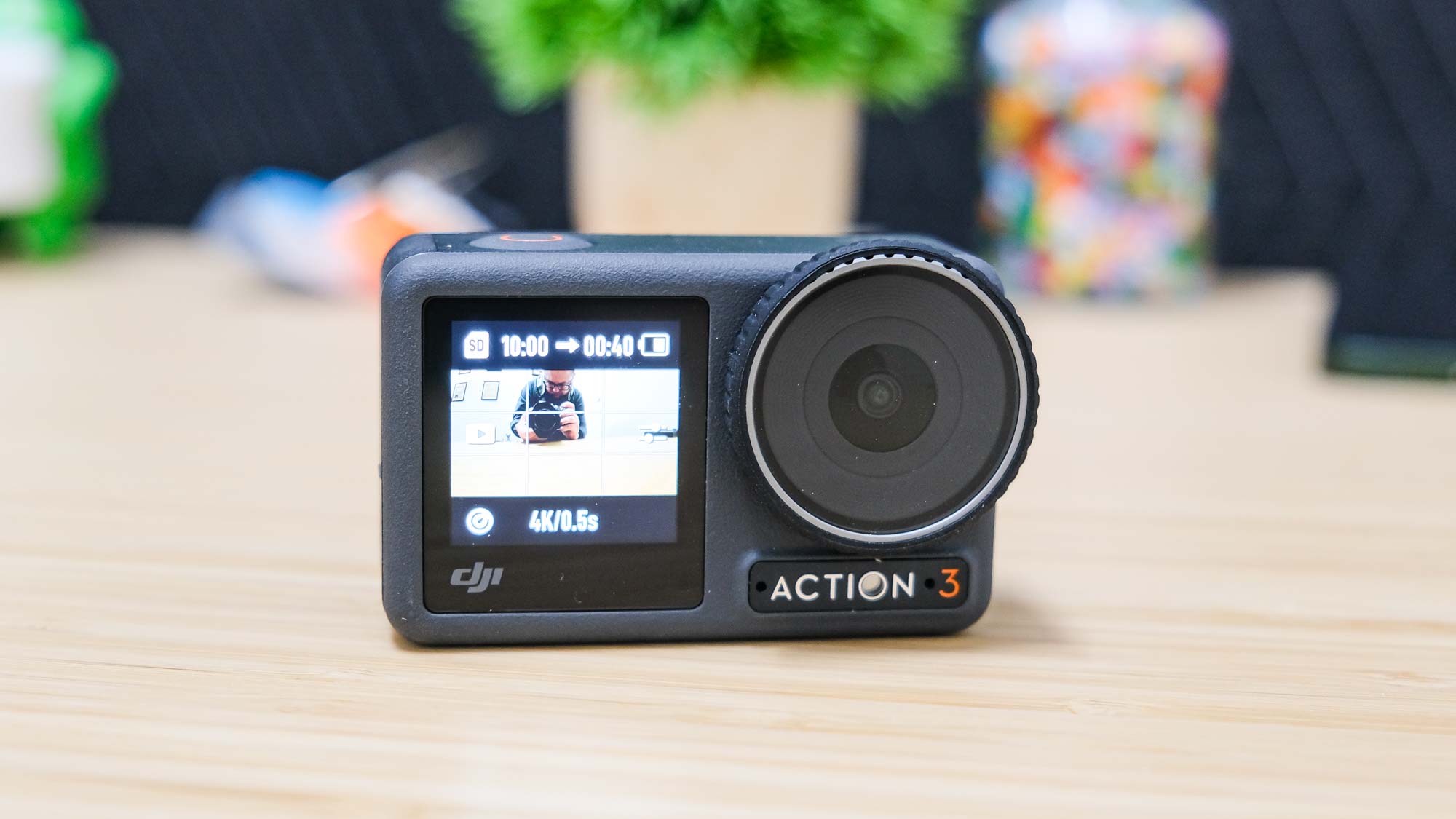
On the left side of the body is the power button that doubles as a QuickShot button. A quick press turns on the camera, and once powered on you can press it to quickly move between your favorite shooting modes or the playback menu. Hold it in for a second and the camera turns off. Just below the power button is a door that covers the USB-C port that’s used for charging and transferring data.
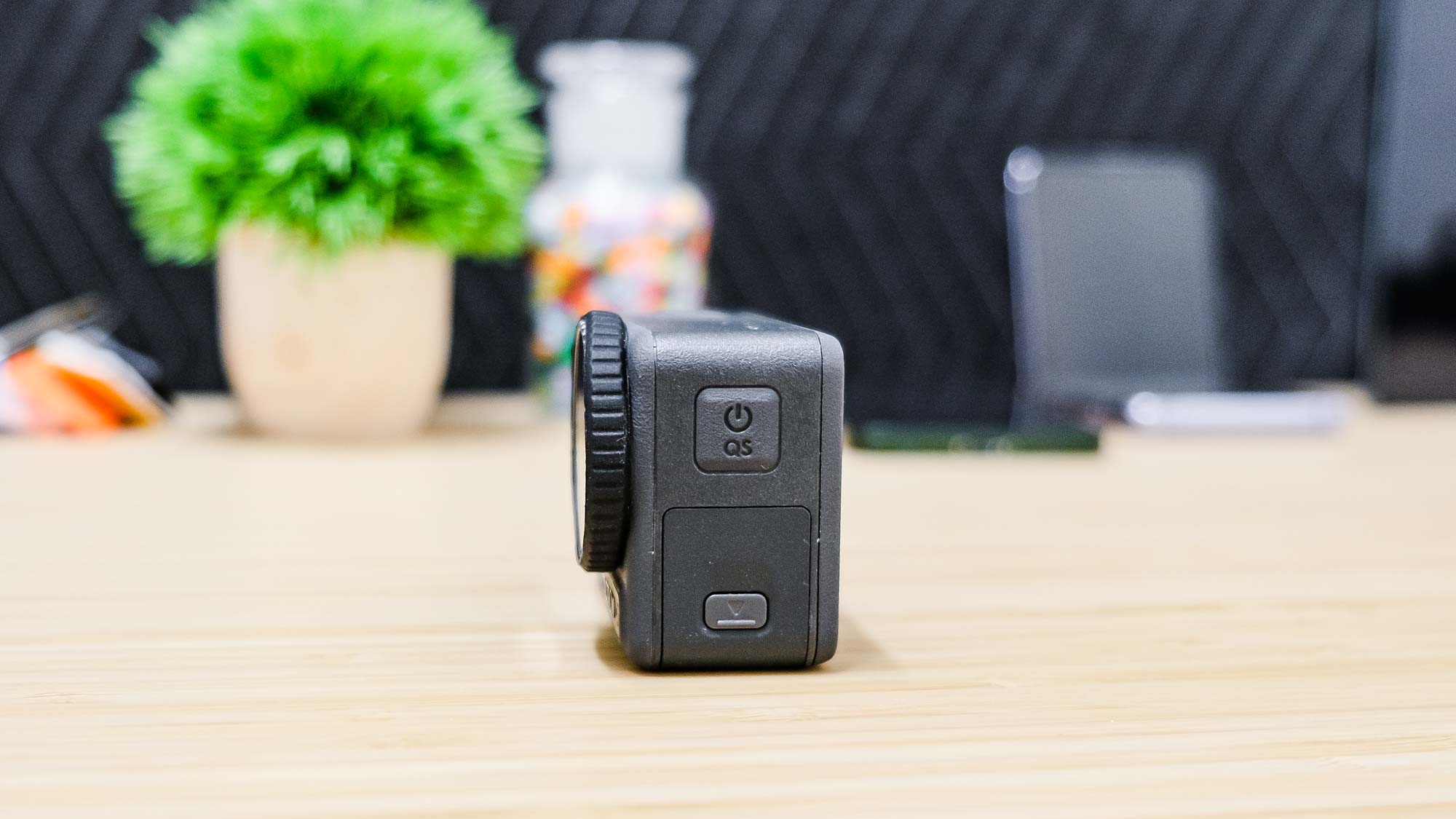
On the opposite side of the housing is another door that reveals the removable battery and microSD card slot.
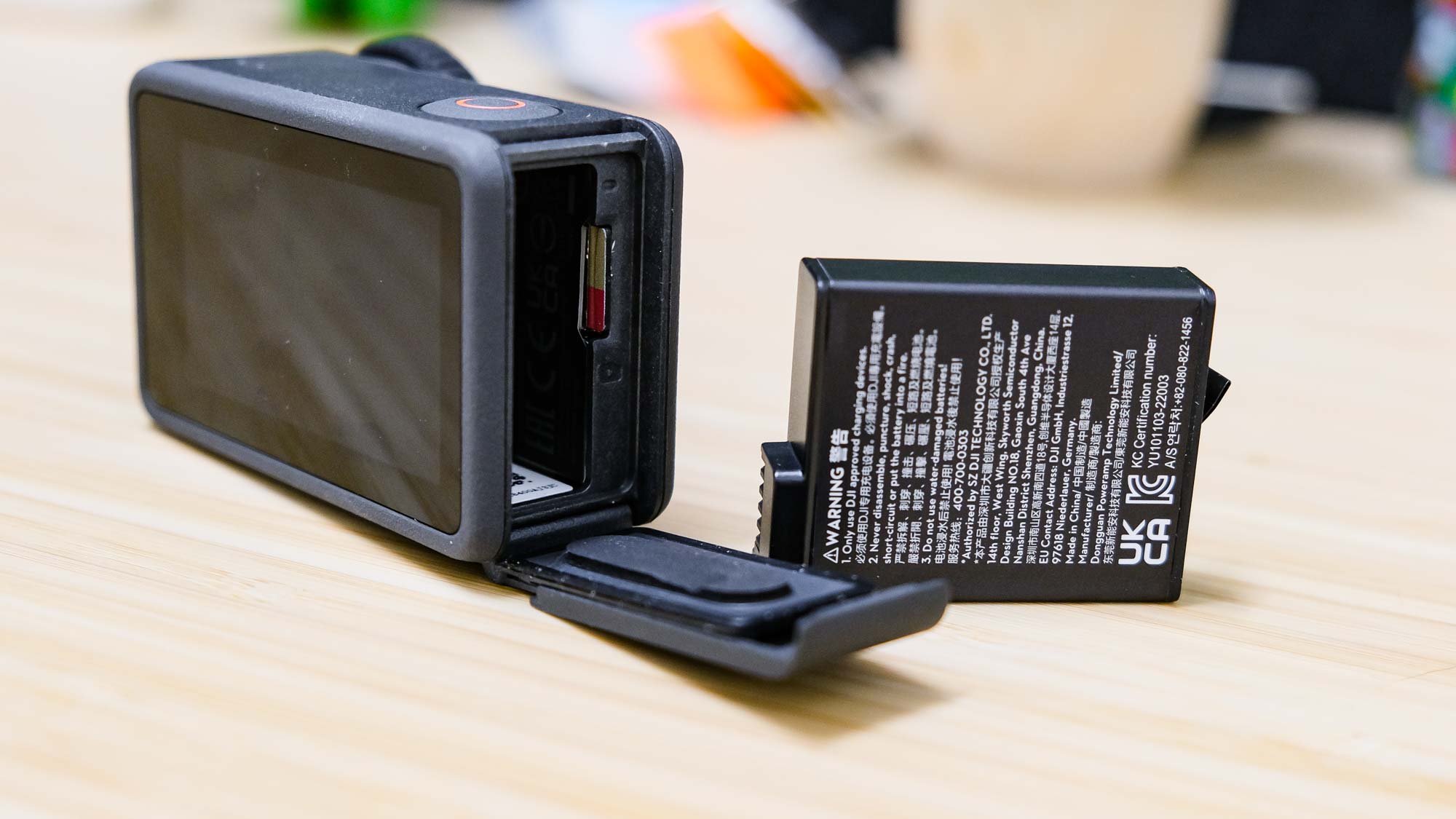
The back of the camera is the 2.25-inch main touchscreen display. Both displays are clear and bright enough to see in direct sunlight.
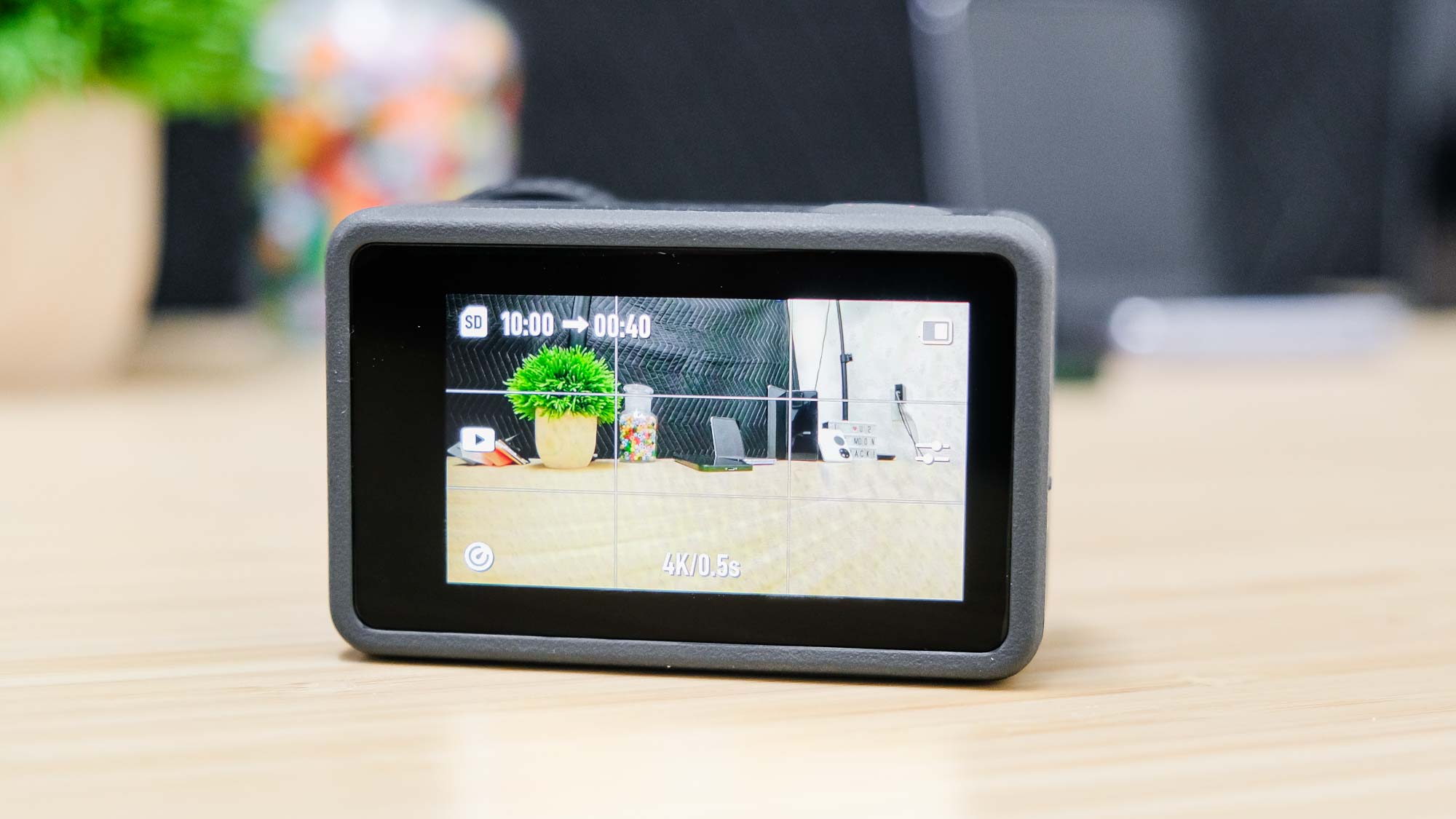
It doesn’t look like much, but what makes the Action 3’s design so clever is the magnetic mounting system that’s found on the bottom of the housing. There are two attachment points for the quick-release adapter mount to latch onto, with a magnet ensuring a strong attachment and proper alignment. A reassuring click lets you know the camera is connected to the adapter and isn’t going anywhere.
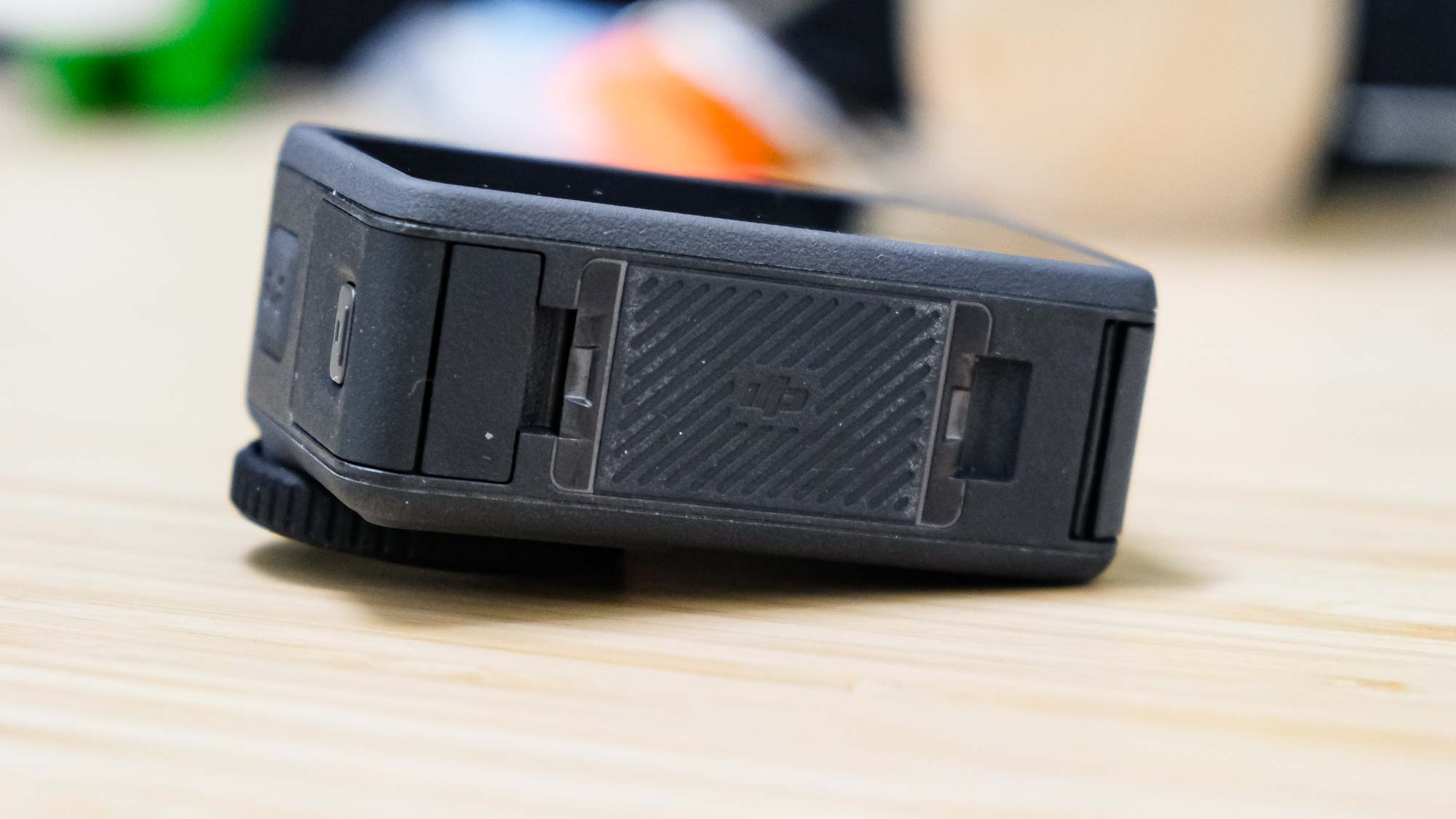
I much prefer the quick-release adapter over GoPro’s current design which requires you to remove the thumb screw each time you want to remove the camera from a mount — a process that can be frustrating depending on the mount and the amount of space you have to turn the screw.
I left a couple of the quick-release mounts attached to different mounts while testing the Action 3, and could easily switch between them with a quick press of the buttons on the side of the attachment.
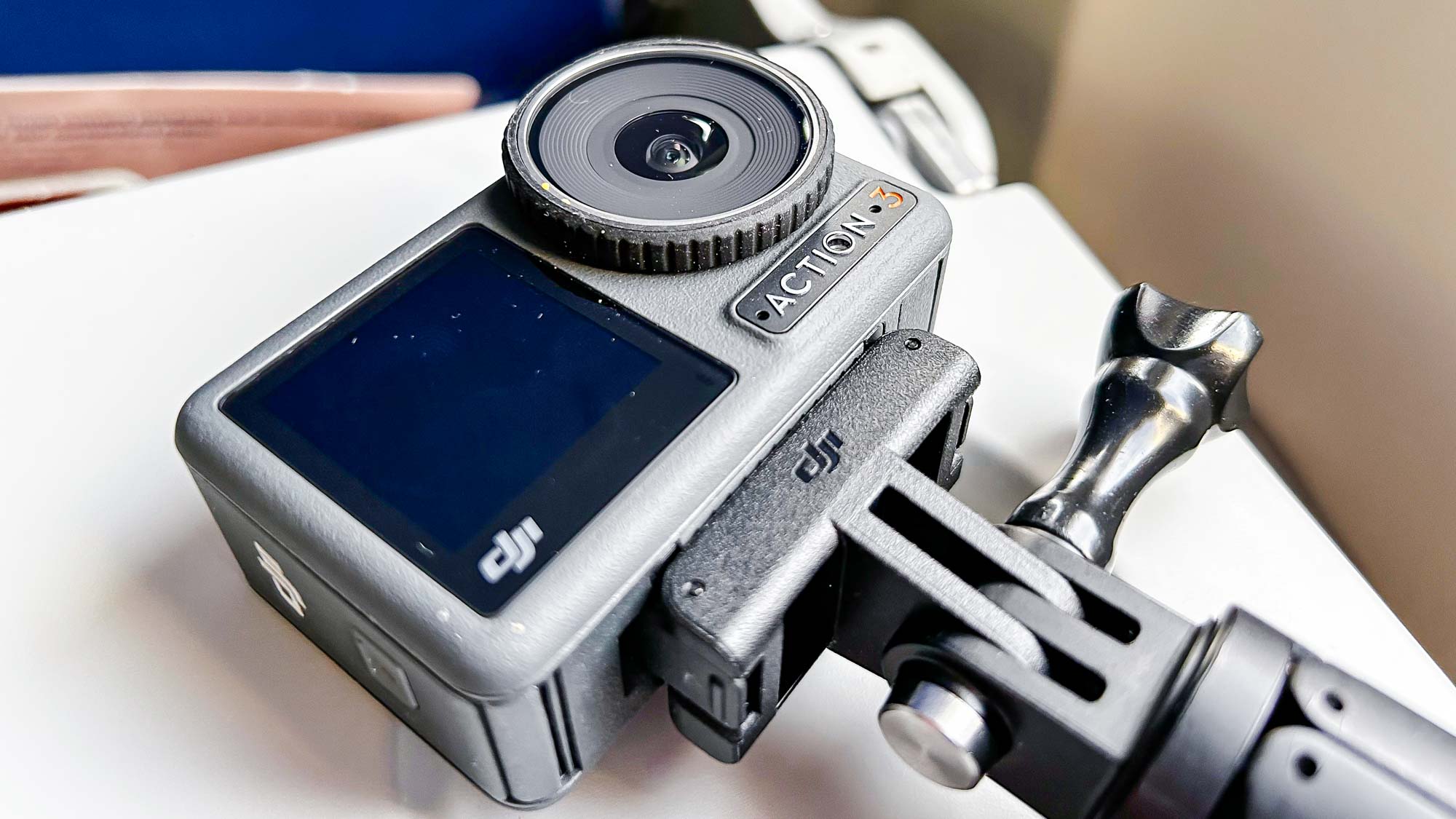
A protective frame comes in the box with the Action 3. It wraps around the camera to add another layer of protection in addition to a vertical mounting point for the quick-release adapter. Why vertical? For the Instagram and TikTok creators.
DJI Osmo Action 3 review: Camera quality
The Action 3 can record video at up to 4K and 120 frames per second, has a 155-degree field-of-view and captures 12-megapixel still photos. Those stats don’t come close to GoPro’s Hero 11 Black’s 5.3K at 60FPS with 27-megapixel stills, however.
One of the more notable differentiators between the competing cameras is the Hero 11 Black’s new image sensor that allows for recording video at an 8:7 aspect ratio, allowing users to crop any captured content after the fact, whereas the Action 3 forces you to pick recording in 16:9 or 4:3 before you press the record button.

The benefit of the Hero 11 Black’s more versatile sensor is that you’re not forced to decide if you want to shoot something that’s better suited for Instagram, TikTok or YouTube.
For someone who isn’t worried about optimizing their video for social networks, the Action 3 is a simple camera to use that delivers on its promise of capturing high-quality video. DJI carefully points out that the Action 3 doesn’t overheat (something that GoPro’s cameras are prone to do when recording for long periods of time), and that you can even record at sub-zero temperatures with the Action 3. DJI lists the official operating temperature range as -4-degrees to 113-degrees Fahrenheit.
There are several shooting modes available on the Action 3, including photo, video, slo motion, timelapse and hyper lapse. Each mode has its own settings and features you can tweak, either through the touchscreen interface or the DJI Mimo app. There are plenty of presets, such as options to record a timelapse of a crowd, the sunset or clouds. You can also create your own custom timelapse mode. Here’s a sample of what I captured using the clouds preset over the course of an hour in my backyard a couple of weeks ago:
I also used the hyperlapse mode to capture a lap around a terminal in the Dallas Love Field airport during a lengthy delay a few days ago. My favorite part about the video is how it gives the impression that people walking in front of me are really just scooting across the ground.
As for video stabilization, you have three different options when recording at up to 4K/120fps. RockSteady 3.0 doesn’t keep your video entirely still while walking around or running, but it removes general shakes and bumps. HorizonSteady works at 2.7K/60 and is the most aggressive stabilization setting, allowing you to turn the camera a complete 360 degrees and keeping the shot still while the viewer doesn’t know anything ever happened. Finally, Horizon Balancing is billed by DJI as the middle ground option for 4K/60 recordings, capturing smooth video but allowing some movement for a more realistic experience.
I found all three modes not quite as comprehensive or aggressive as GoPro’s HyperSmooth 5.0 video stabilization, but for someone (like me) who was recording my daily life during testing (thanks to a skydiving injury that resulted in a bruised tailbone), it worked just fine.
DJI Osmo Action 3 review: App and video editing
Once you’re done recording video or taking photos with the Action 3, the work really begins — what do you do with your clips? Thankfully, transferring videos from the camera to DJI’s Mimo app is an impressively quick and easy process. I’d actually go so far to say it’s better than what GoPro’s Quik currently offers. Once the camera and your phone are connected, you’re able to download a video in a matter of seconds, not minutes like I’ve often experienced with the Quik app.
Once transferred, the Mimo app has built-in editing tools that allow you to combine clips and photos into one creation, something that helps eliminate the guesswork of what to include or not include in a creation.
You select a template, it tells you the number of photos and videos you need to select, and then once you’ve added them it puts the clip together for you. You can fine-tune it to your liking.
There’s a slight learning curve to using Mimo, but it’s intuitive enough that I don’t see even a complete video editing novice having trouble learning how to use it.
For more advanced edits and templates, the LightCut app fills the mold just fine. You can select an entire day’s worth of clips and let LightCut do the leg work for you.
For instance, I recorded an entire day’s worth of travel from Colorado to New York for a Made By Google event; this is the end result.
Other than a few horrible recording decisions that I made early on when it was still dark out, the rest of the video was condensed down into a 43-second montage that more or less captured the day as I had envisioned it.
My lone complaint about the editing experience wouldn’t have even existed two months ago: GoPro’s new Auto-Highlights feature takes the automatically uploaded clips and creates a clip all without you having to do anything more than plug your camera in. It’s far more seamless and something I’ve been using a lot.
That said, the combination of Mimo and LightCut, along with the fast transfer speed of clips from the camera to phone, is something I can definitely get used to using. And there’s something to be said about having to go through some of the footage on your own that gives you a feeling over ownership with the end product, instead of letting the cloud and robots do all the thinking for you.
DJI Osmo Action 3 review: Battery life
I completely filled a 64GB microSD card and drained a battery without the Action 3 powering down due to heat — although it was very warm to the touch. The total recording time was roughly 160 minutes. I also put the Action 3 in my freezer that’s set to 0-degrees Fahrenheit and let it record for 30 minutes without any issues.
DJI Osmo Action 3 review: Verdict
DJI’s Osmi Action 3 is a more affordable (but not quite as capable) option over GoPro’s Hero 11 Black. At $329 for the basic setup or $439 for two extra batteries with a charging case and some extra accessories, the Action 3 is priced right. The Hero 11 Black is $499 before applying any GoPro Subscription promotions — and that’s just for the camera.
The picture and video quality of the Action 3 is good enough for someone who just wants to capture day-to-day life, with the occasional bike ride or adventure. If you’re making a living off of videos and photos, you’ll be better suited by GoPro’s offering. For everyone else, however, the Action 3 looks and plays the part of an action camera for everyone.
Jason Cipriani is a freelance writer based out of Colorado. He writes about all sorts of technology — cameras, wearables, smartphones, smart home and other gadgets — for sites including Tom’s Guide, ZDNet, IGN, CNN Underscored, and The Street.


